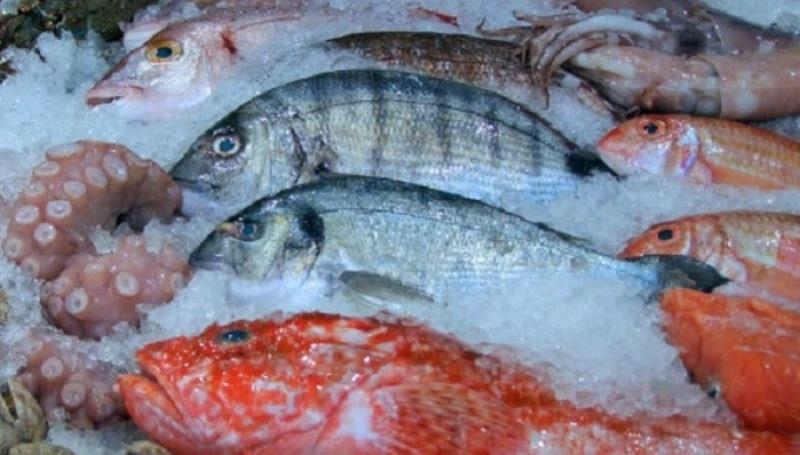
Sustainably caught seafood a win-win
by NOAA Fisheries 18 Nov 2018 12:39 UTC

Sustainably caught seafood a win-win © NOAA Fisheries
The average American consumes about 15 pounds of seafood each year. How do we choose which seafood to buy? Do the abundant seafood labels — U.S.-caught, dolphin safe, MSC-certified, red, yellow, green, farm-raised, wild-caught, etc. — affect our choices? Does information about sustainability make a difference in our grocery store purchases?
Economists sought to answer just these sorts of questions in a paper called "Measuring willingness to pay for environmental attributes in seafood," published in the journal Environmental and Resource Economics The previous link is a link to Non-Federal government web site. Click to review NOAA Fisheries Disclaimer earlier this year. Fishers, seafood retailers and policy makers all have a stake in the answers.
The good news is, "Consumers are willing to pay a premium for seafood labeled as sustainable," said the study's lead author, James Hilger, PhD, NOAA Fisheries Southwest Fisheries Science Center. But the impacts of labels aren't linear. "Simple traffic-light labels over-simplify the sustainability story," explained co-author Andrew Stevens, Assistant Professor of Agricultural Economics at Mississippi State University.
The experiment
The researchers capitalized on the roll out of a new seafood label administered by FishWise in a high-end grocery store chain in the Bay Area. "We took advantage of an introduction of a labeling roll-out that started in a subset of stores within the same retailer and not in others," said Stevens. They introduced a "traffic-light" seafood label to its stores a few at a time. The label used green, yellow, or red to denote "best choice," "proceed with caution," and "worst choice," respectively. In addition, each product was labeled with the species, catch method, country of origin, and the price. While the labels were not introduced in all stores at once, the phased roll-out provided "a nice design to measure causal responses to the labels, controlling for other factors possibly affecting consumer responses by using responses in the comparable and non-labeled stores as 'controls,'" said Sofia Villas-Boas, Ph.D., Professor in the Department of Agriculture and Resource Economics, UC Berkeley.
Consumers prefer selective-gear, wild-caught and U.S.-caught seafood, authors say
It was easy enough to see that the labels affected buying choices and that shoppers preferred products labeled as more sustainable choices. The researchers also found that consumers preferred specific sustainable product attributes: wild-caught over farmed, selective over less-selective fishing gear, U.S.-caught over imported.
"But this skims over several details, including the fact that some popular products – like salmon – didn't have any red-labeled options in our study. We see that traffic-light labels simply don't affect all seafood products' sales in the same way," said Stevens.
In addition, purchases didn't decline as the color changed to yellow and to red, as expected. Instead, the results for products with a yellow-label, which signified "proceed with caution" presented their own complications. "The label's effect varied depending on the product and the label attributes," said Hilger. "In general, however, consumers preferred products with yellow-labels the least, they detracted from consumer valuation."
"When we looked at all seafood products together, we found that consumers dislike yellow-labeled products so much that they would need an average discount of about $3.50 per pound for the labels not to affect shopping choices," Stevens explained.
This may be because the consumers who frequent this particular chain of grocery stores are already sustainability minded. When there was a green option they preferred green. However if, for example, there was a cheap red shrimp and an expensive yellow shrimp, they tended to buy the cheap red shrimp. It may be because they believed that shrimp is a "bad" choice anyway, so they might as well buy the cheap one. "The importance of buying "green" products varied by species and sometimes people just want jumbo shrimp for a cocktail party without spending a lot of money," explained Hilger. Or it may have been that the label wasn't informative enough. What does "proceed with caution" mean? How can a consumer implement this advice?
Further evidence for this is that FishWise has since changed the meaning of the yellow label to "good alternative," suggesting that they knew the label was confusing.
The take-home messages for consumers, retailers and policy makers
Hilger said that the message to fishers is that, "consumers are willing to pay a premium for seafood caught by U.S. fishermen with selective gear. This should encourage them to differentiate their products from others in the marketplace and help increase revenues."
The message for retailers is that consumers don't make their seafood choices based primarily on sustainability. "Consumers are more likely to choose a seafood species first, and then think about sustainability," explained Stevens. "As a result, traffic-light labels are likely to have their greatest intended effect when there are multiple products of the same species with differently-colored sustainability labels."
Finally, policy makers need to know that consumers use sustainability information to improve their choices. However, this information is often limited and confusing. More effective and standardized labeling will help Americans choose truly sustainable seafood for each of the 15 pounds they eat in a year.
The good news is that consumers prefer sustainable seafood. The challenge is in making the choices clear and available.
To learn more about sustainable seafood in the US: